International Steel Prices
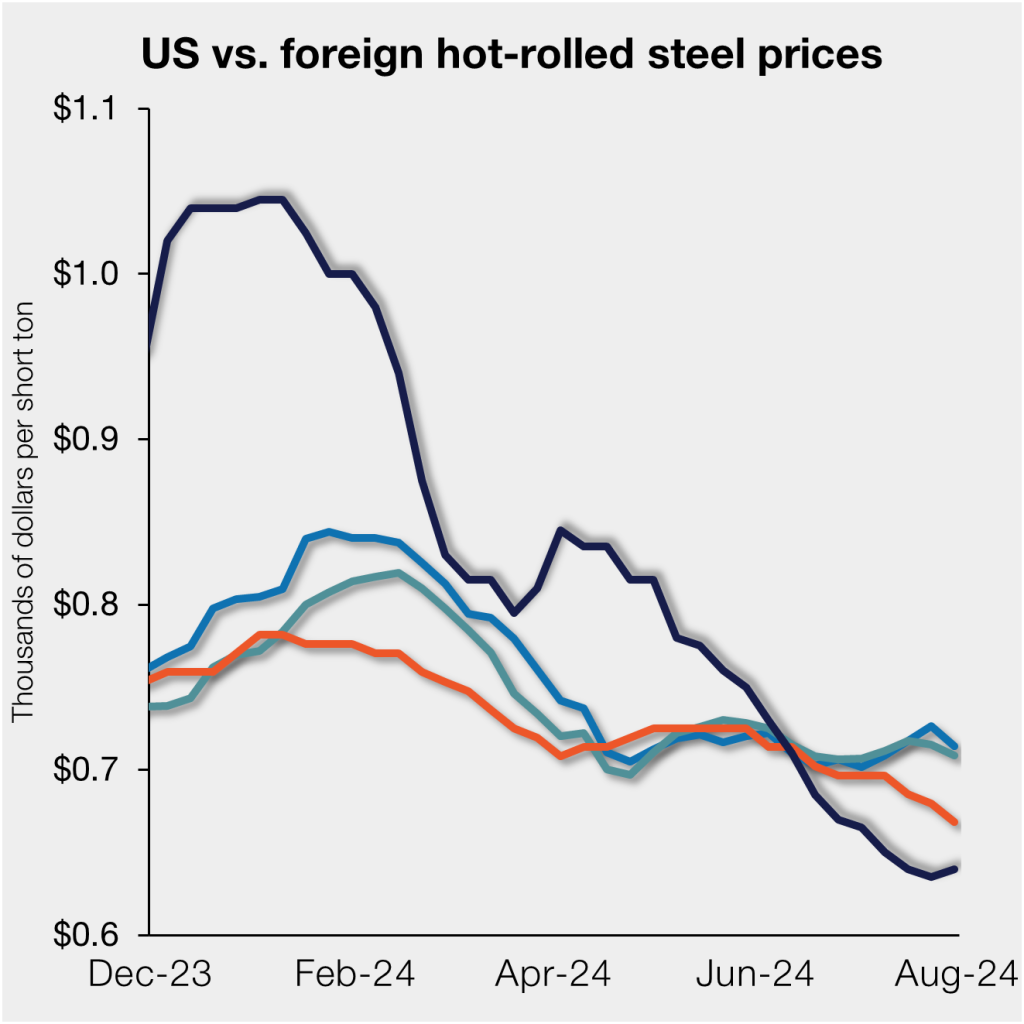
US HRC premium over imports narrows
Written by David Schollaert
August 1, 2024
The premium between US hot-rolled (HR) coil and offshore hot band prices narrowed this week as it appears domestic tags might have reached a bottom.
US hot-rolled (HR) coil prices remain below offshore hot band prices on a landed basis. However, domestic prices appear to be inflecting up after both Cleveland-Cliffs and Nucor announced higher spot tags.
While it’s still too early to tell if the shift will last, the premium is still near a two-year low.
SMU’s check of the market on Tuesday, July 30, put domestic HR coil tags at $640 per short ton (st) on average, up $5/st from last week. Stateside hot band – at approximately a 20-month low – remains more than $200/st below a recent high of $845/st in early April.
Domestic HR coil prices are now theoretically 8.9% cheaper than imports. The premium narrowed from 11.3% last week.
In dollar-per-ton terms, US HR coil is now, on average, $57/st cheaper than offshore product (Figure 1). That’s up $15/st on average from last week but still nearly $340/st from its recent high in December. After slipping to parity in early June, the premium pushed further into negative territory before recovering slightly this week.
The charts below compare HR prices in the US, Germany, Italy, and Asia. The left-hand side highlights prices over the last two years, while the right-hand side zooms in to show more recent trends.
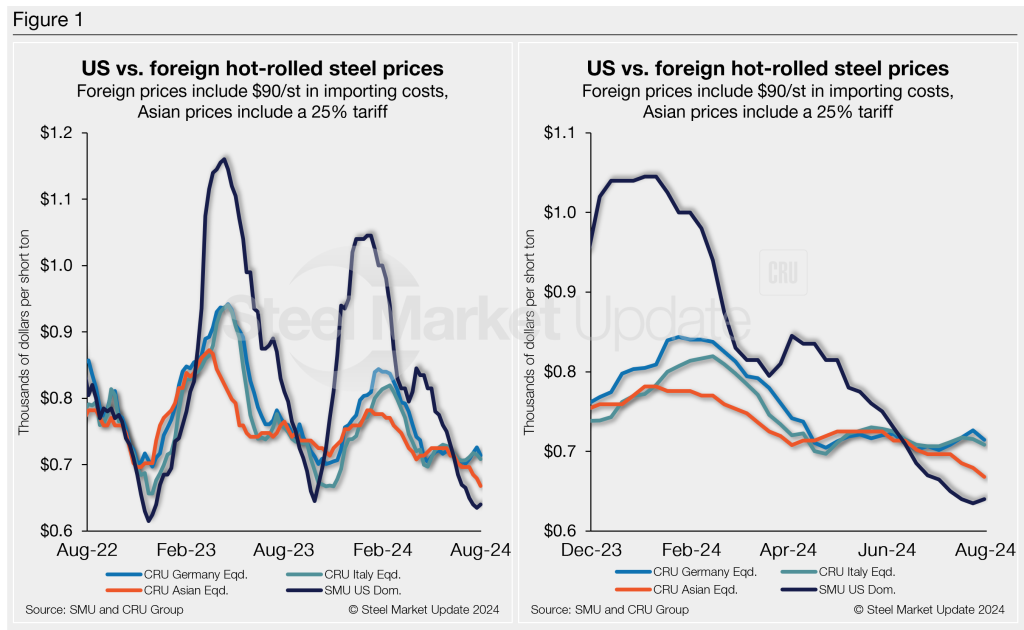
Methodology
This is how SMU calculates the theoretical spread between domestic HR coil prices (FOB domestic mills) and foreign HR coil prices (delivered to US ports): We compare SMU’s US HR coil weekly index to the CRU HR coil weekly indices for Germany, Italy, and East and Southeast Asian ports. This is only a theoretical calculation. Import costs can vary greatly, influencing the true market spread.
We add $90/st to all foreign prices as a rough means of accounting for freight costs, handling, and trader margin. This gives us an approximate CIF US ports price to compare to the SMU domestic HR coil price. Buyers should use our $90/st figure as a benchmark and adjust up or down based on their own shipping and handling costs. If you import steel and want to share your thoughts on these costs, please get in touch with the author at david@steelmarketupdate.com.
Asian HRC (East and Southeast Asian ports)
As of Thursday, Aug. 1, the CRU Asian HRC price was $463/st, down $9/st vs. the week prior. Adding a 25% tariff and $90/st in estimated import costs, the delivered price of Asian HRC to the US is approximately $668/st. This compares to the latest SMU HR average of $640/st for domestic material.
The result: US-produced HRC is theoretically $28/st cheaper than steel imported from Asia. The spread is down $15/st vs. last week but it still a swing of $309/st from its seven-month high of $281/st in late December.
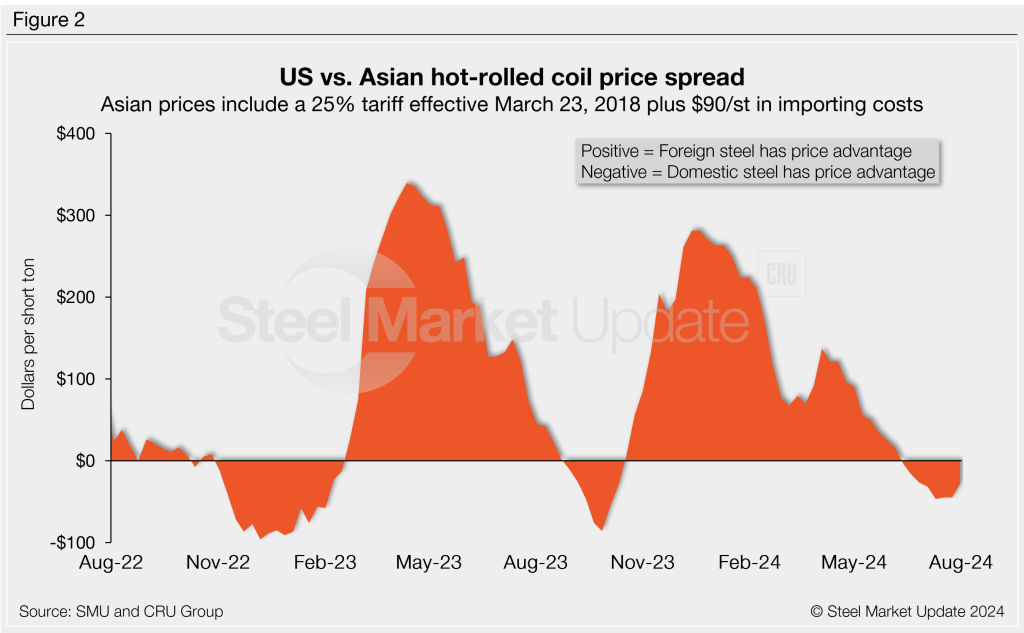
Italian HRC
Italian HR coil prices were down $6/st to roughly $619/st this week. After adding import costs, the delivered price of Italian HR coil is, in theory, $709/st.
That means domestic HR coil is theoretically $69/st cheaper than HR coil imported from Italy. The spread is up $11/st from last week. Despite the slight turn, the domestic hot band price premium over offshore product from Italy has swung by $366/st from a recent high of $297/st just five months ago.
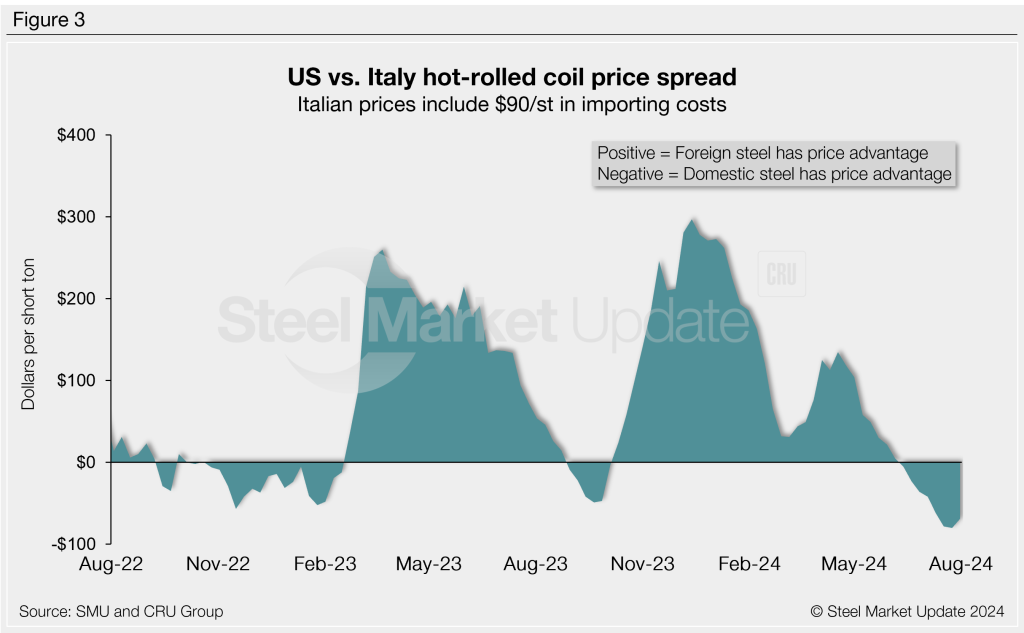
German HRC
CRU’s German HR coil price moved $12/st lower from the week before to $624/st. After adding import costs, the delivered price of German HR coil is also, in theory, $714/st.
The result: Domestic HR coil is theoretically $74/st cheaper than HR coil imported from Germany. The spread is up $17/st week over week (w/w) but still $339/st removed from 2023’s widest spread of $265/st.
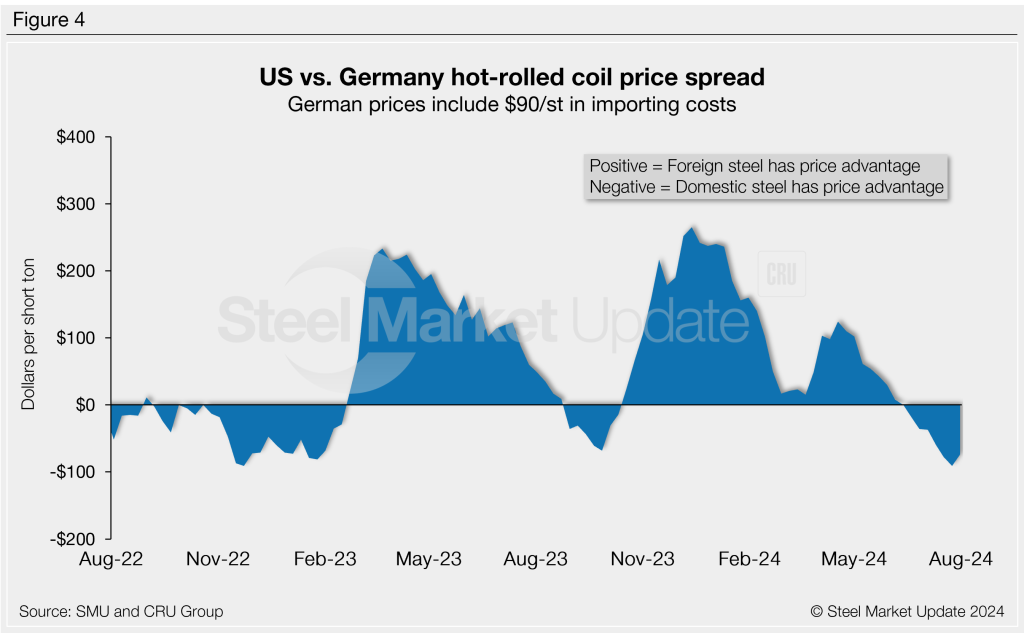
Notes: Freight is important when deciding whether to import foreign steel or buy from a domestic mill. Domestic prices are referenced as FOB the producing mill, while foreign prices are CIF the port (Houston, NOLA, Savannah, Los Angeles, Camden, etc.). Inland freight, from either a domestic mill or from the port, can dramatically impact the competitiveness of both domestic and foreign steel. It’s also important to factor in lead times. In most markets, domestic steel will deliver more quickly than foreign steel.
Effective Jan. 1, 2022, Section 232 tariffs no longer apply to most imports from the European Union. It has been replaced by a tariff rate quota (TRQ). Therefore, the German and Italian price comparisons in this analysis no longer include a 25% tariff. SMU still includes the 25% Section 232 tariff on prices from other countries. We do not include any antidumping (AD) or countervailing duties (CVD) in this analysis.

David Schollaert
Read more from David SchollaertLatest in International Steel Prices

US and offshore HRC prices tick lower
The threat of tariffs over the past two months has been a springboard for US prices. But the Section 232 reinstatement on March 13 narrowed the domestic premium over imports on a landed basis.

Domestic CRC prices surge ahead of imports
The price spread between stateside-produced CR and imports reached its widest margin in over a year.

US HR prices rising faster than offshore tags
Hot-rolled (HR) coil prices continued to rally in the US this week, quickly outpacing price gains seen abroad. The result: US hot band prices have grown widely more expensive than imports on a landed basis. The premium US HR tags carry over HR prices abroad now stands at a 14-month high. SMU’s average domestic HR […]

US HR price premium over imports widens
Hot-rolled (HR) coil prices were flat in the US this week, while tags in offshore markets were mostly down.

US HR price premium over imports edges up
The price premium between stateside hot band and landed imports widened slightly this week.
